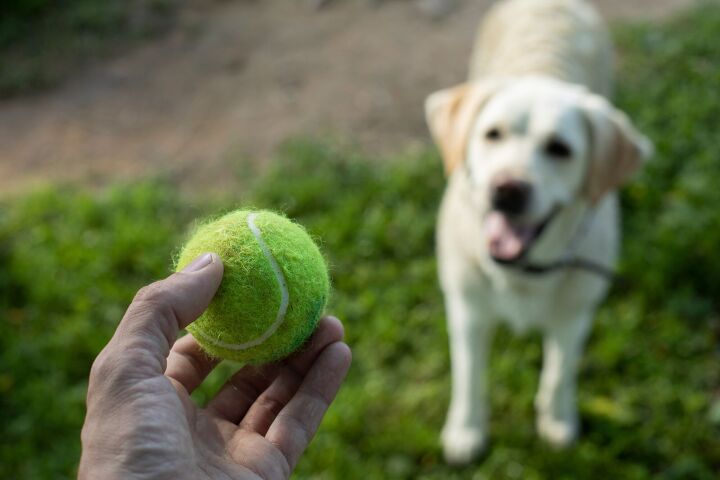Wish Your Dog Could Understand You? New Study Says They Can!

You don’t have to be a dog owner to know that dogs can learn and understand commands like “sit” or “come”. But, a new study has made a groundbreaking discovery that dogs also know that certain words stand for specific objects.
This finding won’t come as a big surprise to any dog owner who has ever asked their pup to “go get your toy” and, a minute later, been handed a chewed-up rubber ball or slobbery stuffed animal.
Scientists have long been interested in learning whether dogs can truly associate words with objects. However, researchers couldn’t figure out whether dogs and other animals get a mental image when they hear an object's name. This would suggest that dogs have a better understanding of language than believed before.
Researchers in Hungary have discovered that in addition to being able to respond to commands such as “sit”, “roll over”, or “stay” dogs can also grasp the essence of nouns. This relationship with language is called referential understanding, and it has been unproven in dogs until now.
“When we are talking about objects, objects are external to the dogs and dogs have to learn that words refer, they stand for something that is external to them,” explained the study’s co-lead author, Marianna Boros, of the Department of Ethology at the Eötvös Loránd University, Budapest, Hungary.
To get some answers about what is happening in the dog brain when it processes words, Boros and her colleagues asked 18 dog owners to bring their pooches to the lab along with five objects the dogs knew well. The objects included balls, slippers, leads, rubber toys, frisbees, and other items.
Researchers instructed the owners to say the words for the items before showing their dog either the correct object or a different one. For example, the owner might say “Rover, look, the ball”, but hold up a lead instead.
During the tests, the researchers measured the dogs’ brain activity using non-invasive electroencephalography, or EEG. The idea was to see whether EEG could offer a better insight into dogs’ understanding of language.
The brain recordings showed different patterns in the brain when the dogs were shown an object that matched or didn’t match the owner’s spoken word. The difference was even greater for the words owners believed their dogs knew well.
The same results were seen when humans performed these tests and are widely accepted as people understanding the word well enough to form a mental image of the object they were later shown.
“We expected that if a dog really understands the meaning of the object’s word, it will expect to see that object. And if the owner shows a different one, there will be a so-called surprise reaction in the brain. And this is exactly what we found,” said Boros according to ABC News.
Lilla Magyari, also of Eötvös Loránd University, and the other co-first author, said that although some other animals have shown some degree of referential understanding of language, they have typically been trained to do so. In dogs, she explained, such capacities seem to be inborn and don’t require any particular training or talent.
Researchers stress they aren’t claiming that dogs understand words as well as humans. Future studies are needed to determine whether dogs can generalize in the same way humans learn to as children.
This study raises an interesting question of why, if dogs understand nouns, more of them don’t show it. One possible answer is that dogs know more than they are willing to show us.
Join the PetGuide community. Get the latest pet news and product recommendations by subscribing to our newsletter here.

Nevena is a freelance writer and a proud mom of Teo, a 17-year-old poodle, and Bob, a rescued grey tabby cat. Since childhood, she had a habit of picking up strays and bringing them home (luckily, her parents didn't know how to say NO). When she's not writing for her fellow pet parents, Nevena can be found watching Teo sleep. To her defense, that's not as creepy as it sounds!
More by Nevena Nacic






















